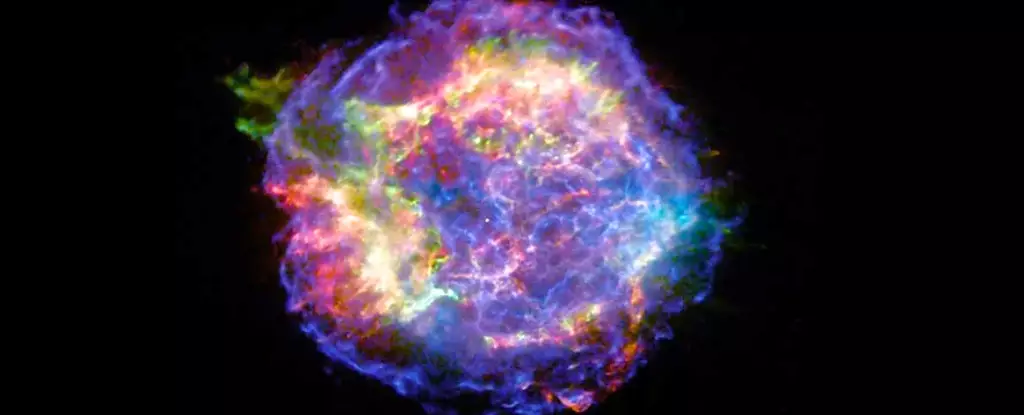Richard Feynman famously highlighted the atomic nature of matter as a fundamental truth worth passing to future generations. This is no exaggeration—understanding atoms is essential because they constitute all objects with mass, essentially everything we can see and touch. Atoms consist of a dense nucleus formed by protons and neutrons, surrounded by a cloud of electrons. The balance between the positively charged protons and negatively charged electrons makes atoms electrically neutral. Each element is defined by its number of protons, known as the atomic number. While elements like carbon and oxygen dominate Earth’s biochemical landscape, hydrogen and helium reign supreme cosmically, especially in the universe’s earliest days.
The Cosmic Dawn of Atoms
The origin story of atoms begins shortly after the Big Bang, approximately 13.8 billion years ago. Initially, the universe was a blistering hot, dense soup where fundamental particles like quarks and electrons roamed freely without forming stable atoms. Protons and neutrons fused together during the universe’s first few minutes, creating helium nuclei and trace amounts of deuterium, a heavier hydrogen isotope. Yet, it took around 400,000 years before the universe cooled enough for electrons to orbit these nuclei, thus forming neutral hydrogen and helium atoms in a phase called “recombination” — a term somewhat misleading since this was the first time electrons combined with nuclei.
This cooling was crucial: before that, the intense thermal energy prevented electrons from settling into atomic orbits. The universe at this stage was about 1,000 times smaller and hotter than today, with temperatures around several thousand degrees Celsius—far beyond conditions on Earth. This delicate balance of temperature and density dictated the formation of the simplest atomic constituents, setting the stage for the cosmos as we know it.
Stellar Factories: Forging the Elements Beyond Hydrogen and Helium
While the universe began predominantly with hydrogen and helium, the heavier atoms essential for planets, life, and technology had to come from somewhere else. Stars are the cosmic crucibles where these elements are forged. Deep within stars, nuclear fusion—the process of combining lighter nuclei to create heavier nuclei—powers their luminosity and generates new atoms.
Fusion requires overcoming a significant hurdle: the electromagnetic repulsion between positively charged protons. Only in the extreme heat and pressure at the cores of stars, often exceeding a billion degrees Celsius, can protons get close enough for the strong nuclear force—an immensely powerful but short-ranged interaction—to bind them together. These stellar conditions allow the synthesis of elements up to iron and nickel in massive stars.
Yet, even these intense environments have limits. Creating elements heavier than iron demands energy input rather than releasing it, which individual stars cannot provide. Nature, however, showcases spectacular workaround mechanisms.
Cataclysmic Explosions and Rare Cosmic Events: Crafting the Heaviest Elements
When massive stars exhaust their nuclear fuel, their cores collapse, resulting in supernova explosions. These cataclysmic events unleash unimaginable energy, enabling nucleosynthesis beyond iron, producing precious metals like gold and elements vital for complex chemistry. These newly minted atoms scatter into space, enriching interstellar clouds with the raw materials for new stars, planets, and eventually life.
Astronomers have also uncovered other profound cosmic phenomena that manufacture heavy elements, such as neutron star collisions. These collisions are among the universe’s most energetic processes, creating and dispersing rare heavy elements, while the resulting gravitational waves ripple across spacetime. Such discoveries have transformed our understanding of element formation, revealing a dynamic and violent universe where the heaviest building blocks of matter emerge from extraordinary circumstances.
The Unseen Universe: Dark Matter and the Atom’s Limits
For all our knowledge about atoms, they constitute only the tip of the cosmic iceberg. Dark matter, an elusive form of matter that neither emits nor absorbs light, significantly outweighs ordinary atomic matter in the universe but remains a mystery. Unlike atoms, dark matter does not interact electromagnetically and is invisible to current detection methods. Its nature and origin challenge physicists and astronomers, hinting at new physics beyond the atomic and subatomic theories.
Understanding atom formation already requires mastering complex fields such as nuclear physics, particle physics, and even general relativity to explain high-energy stellar collisions and cosmic expansion. Introducing dark matter into the equation only broadens the frontier of what we need to unravel, pushing the boundaries of science into new, uncertain territories.
Why This Matters: The Profound Implications of Atomic Origins
The journey from the Big Bang to the diverse array of elements on the periodic table is a story of extreme conditions, remarkable processes, and cosmic violence. Knowing how atoms form is more than an academic pursuit: it explains why the universe has structure, why planets exist, and why life is possible. Without the physics governing nuclear fusion and the life cycles of stars, Earth would lack carbon, oxygen, and countless other elements essential to biology and civilization.
I find it exhilarating that the most commonplace objects around us—air, water, rocks, even ourselves—are the outcome of cosmic phenomena occurring billions of years ago under unimaginable conditions. This understanding encourages a profound appreciation of our cosmic heritage and sparks a sense of wonder about the universe’s complex and beautiful mechanisms. The formation of atoms encapsulates the interplay of fundamental forces, the passage of time on colossal scales, and the intricate dance of particles—all converging to create everything we cherish.


Leave a Reply